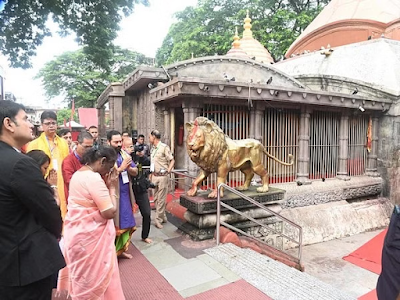Padmapuram Gardens
Padmapuram Gardens is a beautiful botanical garden located near Araku town in the Araku Valley of Andhra Pradesh, India. Here's some detailed information about Padmapuram Gardens:
 |
| Padmapuram Gardens |
Location: Padmapuram Gardens is situated in the Araku Valley, approximately 3 kilometers away from the main Araku town. It's easily accessible by road and is a popular stop for tourists visiting Araku Valley.
 |
| Andhra Pradesh |
Landscape: The gardens are spread across lush greenery, surrounded by hills and forests characteristic of the Eastern Ghats. It's a serene and picturesque setting, offering visitors a tranquil environment to relax and enjoy nature.
 |
| Natural Beauty |
Botanical Collection: Padmapuram Gardens is known for its diverse collection of plants, flowers, and trees. Visitors can explore a variety of flora, including exotic flowers, ornamental plants, and rare species of trees. The well-maintained pathways and lawns make it ideal for leisurely walks and picnics.
 |
| collection of plants |
Lotus Pond: One of the highlights of Padmapuram Gardens is its lotus pond, which is adorned with blooming lotus flowers. The sight of colorful lotus blossoms floating on the water adds to the garden's beauty and charm.
 |
| lotus flowers |
Children's Play Area: The gardens feature a designated play area for children, equipped with swings, slides, and other recreational facilities. It's a great spot for families to spend quality time together amidst nature.
 |
| Play Area |
Boating: Visitors can enjoy boating in the small pond within the gardens. Pedal boats are available for rent, allowing visitors to paddle around the tranquil waters and admire the surroundings from a different perspective.
Refreshment Facilities: Padmapuram Gardens has snack stalls and small eateries where visitors can purchase refreshments and snacks. It's a convenient place to take a break and enjoy some local delicacies while exploring the gardens.
Events and Festivals: Occasionally, cultural events, flower shows, and festivals are organized in Padmapuram Gardens, adding to the vibrant atmosphere and providing visitors with an opportunity to experience the local culture and traditions.
Padmapuram Gardens offers a peaceful retreat amidst nature, making it a popular attraction for tourists visiting Araku Valley. It's a place where visitors can unwind, appreciate the beauty of the surroundings, and create lasting memories with family and friends.























